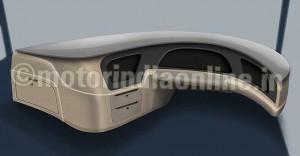 The MG Group has been known for its forward-looking approach, having brought in many innovations and groundbreaking concepts to the Indian bus industry. The company, in line with its reputation of setting new benchmarks in terms of product design, customer understanding, technology and other aspects, has introduced an all-new range of premium interiors in its buses, a possible game-changer in the industry. It is also building on the initial success of its recently created brands namely MG Composites and MG Grey Engine, as it targets a record performance in the current financial year. Mr. Anil. M. Kamat, Executive Director, MG Group, shares his views on all this and more in an exclusive interaction.
The MG Group has been known for its forward-looking approach, having brought in many innovations and groundbreaking concepts to the Indian bus industry. The company, in line with its reputation of setting new benchmarks in terms of product design, customer understanding, technology and other aspects, has introduced an all-new range of premium interiors in its buses, a possible game-changer in the industry. It is also building on the initial success of its recently created brands namely MG Composites and MG Grey Engine, as it targets a record performance in the current financial year. Mr. Anil. M. Kamat, Executive Director, MG Group, shares his views on all this and more in an exclusive interaction.
At the outset, please give us an update on business at MG Group. Given the fact that the industry did not have a good time during 2013, how was the year for MG Group? What are your major plans for the current fiscal?
The industry definitely had a tough time in FY 2013-14 and hence, so did business at MG Group. We closed at about 6,000 buses during the period, which is nearly 2,300 units lesser than the previous financial year. Despite the loss of business, the confidence in the growth of the Indian bus industry is unmoved at the MG Group, which is in line with our commitment towards ‘Mobility & Growth’.
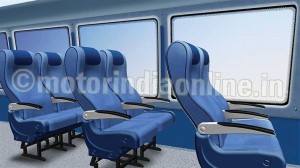 Therefore, we utilized this time to further develop our strengths as a ‘Total Solutions Provider’ for our esteemed customers and invested additional resource into development and innovation of value-added products and services in addition to a couple of new bus models, which has further enhanced our set of tools required to provide uniqueness to our clients. Simultaneously, we have worked very hard on our manufacturing processes, quality systems and a completely different strategy to cater to our private customers.
Therefore, we utilized this time to further develop our strengths as a ‘Total Solutions Provider’ for our esteemed customers and invested additional resource into development and innovation of value-added products and services in addition to a couple of new bus models, which has further enhanced our set of tools required to provide uniqueness to our clients. Simultaneously, we have worked very hard on our manufacturing processes, quality systems and a completely different strategy to cater to our private customers.
We are also in progressive discussions with a world-renowned brand in the bus industry for design, development and manufacturing of a range of luxury buses for the Indian market and expect the buses to be launched in Q3 of the current financial year. We expect this product to be a true demonstrator of ‘luxury at an affordable price’ with features and interiors, which will be a differentiator in the Indian market. This step is completely aligned to our latest strategy to be recognized in the luxury space in the Indian bus industry, which is sure to give us global mileage as an Indian bus builder.
The current order book for FY 2014-15 at MG Group is about 8,300 buses and as we go through the year, considering the JnNURM II scheme, we are confident of adding another 1,500 buses and are targeting a total production of 10,000 buses this year. This fiscal is indeed going to be very exciting and record breaking at the MG Group.
We understand that you have come up with luxury/premium interiors for your buses. What was the driving force behind the introduction of premium interiors in the LCV bus segment, which is usually considered as ‘not-so-premium’?
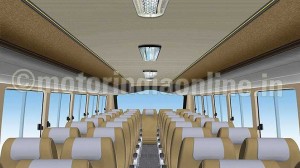 Though luxury is a state of mind and it varies from person to person, at MG Group, we see an increasing trend across the Indian population towards the better things in life. It is precisely this reason that the world’s biggest automobile brands have set up shop in India. This trend has transpired not only into the car segment but is also growing in mass transportation segments such as trains and buses.
Though luxury is a state of mind and it varies from person to person, at MG Group, we see an increasing trend across the Indian population towards the better things in life. It is precisely this reason that the world’s biggest automobile brands have set up shop in India. This trend has transpired not only into the car segment but is also growing in mass transportation segments such as trains and buses.
Customization of buses is inevitable and even the fully-built buses sold by leading Indian OEMs undergo customization at the customers’ end which includes modifications in the exteriors as well as interiors. This is where the MG Group has taken the opportunity to express and translate its passion for automobiles into value for its customers and in turn, the passengers.
Our biggest challenge was to clearly identify and define luxury/premium for commercial vehicles, which is very different from that in cars. Another challenge was the price sensitivity in the Indian commercial vehicle market. Thirdly, the solution required flexibility for any sort of bus model irrespective of the type and dimensions. All the above three conditions had to be satisfied in order to derive the right solution, which we have finally managed to achieve and is unique to MG Group.
Could you take us through the salient features of the new designs, its stand-out aspects and whether it passes on any advantage to the customers and passengers, apart from enhanced aesthetic appeal?
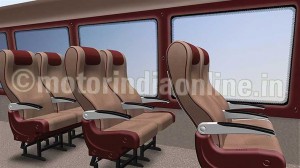 Our new interiors solution, apart from the non-fully-built bus market, can be offered to those customers who buy fully-built buses from OEMs for their price competitiveness. Our solutions range from Rs. 1.5 lakhs to Rs. 2.5 lakhs, over and above the fully-built vehicle price depending on the size of the bus.
Our new interiors solution, apart from the non-fully-built bus market, can be offered to those customers who buy fully-built buses from OEMs for their price competitiveness. Our solutions range from Rs. 1.5 lakhs to Rs. 2.5 lakhs, over and above the fully-built vehicle price depending on the size of the bus.
MG’s newly designed interiors have expert styling inputs with an aesthetic, comfort-focused and safety approach. Design elements can be clearly visible on components such as dashboards, engine hoods, driver consoles, seat upholstery, inner cladding, window finishers, roof finishers, head racks and ambient and mood lighting.
Some of the important aspects of our new interiors are:
• Soft cladding materials are used for body contact parts, which ensure that there are no sharp corners or edges exposed to the passengers in the saloon area.
• New interior concepts with matching color combinations to the exteriors derived from complementary color wheels by expert industrial designers, making the saloon area visually roomy.
• Comfortable seating upholstery with unique style and color combinations.
• Affordable to the customer with a fully flexible design, which can be implemented on any bus irrespective of the model and size.
• Premium look and finish.
• Fully-customized to suit the customer’s need and style.
During our last conversation, you had mentioned about your new brand MG Composites. Could you share details of the same?
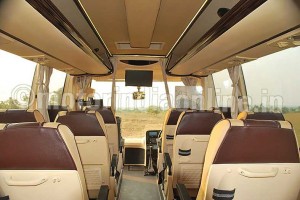 Composites play an invincible role worldwide in buses and the same is the case in the Indian bus industry. At MG Group, we started with a composite, commonly known as FRP (fibre reinforced polymers), five years back in a very small way catering to a small portion of our requirements. This was a trial to understand the intricacies of designing FRP parts and manufacturing the same. Over these five years, we have gained the know-how, the art of composite parts design and mass manufacturing of these parts.
Composites play an invincible role worldwide in buses and the same is the case in the Indian bus industry. At MG Group, we started with a composite, commonly known as FRP (fibre reinforced polymers), five years back in a very small way catering to a small portion of our requirements. This was a trial to understand the intricacies of designing FRP parts and manufacturing the same. Over these five years, we have gained the know-how, the art of composite parts design and mass manufacturing of these parts.
MG Composites has a fully dedicated design, pattern and mould-making shop with an integrated manufacturing setup.
Given the above facts, we have decided to expand in the area of composites, currently FRP parts, which adds to our mission to be a ‘Total Solutions Provider’ for our Bus business. MG Composites currently caters to the entire requirement of our Zaheerabad unit and is in the process of setting up a manufacturing plant in Belgaum, which should start production in the Q1 of the current financial year, to cater to our Belgaum facility.
MG Composites has developed several innovative products and processes, which are unique and has received a highly positive feedback from the market, which clearly expresses customers’ intent of owning buses with our parts, especially for the interiors.
We have planned to aggressively approach the market with our products and are confident of making a mark in the FRP parts industry in time to come.
How has the customer response been for MG Grey Engine, the brand you had unveiled at last year’s Busworld India show? Are the technologies being appreciated by the market and what difference has it made to the MG Group?
We have got a very positive response from our prospective clients who are leaders in the industry. Our products are currently being tested at ARAI and we expect to obtain the required certifications soon, which will enable us to participate in the JnNurm II scheme.
All the customers who have seen the demo of our products have appreciated the mechanical design of our products such as LED destination boards for their uniqueness and quality. The electronics in our products meet the ARAI requirements including the IP 66 standard.
We are also in the process of filing a patent for one of the MG Grey Engine (MGGE) products, which is a unique concept for the Indian market. Our vision for MGGE is to be a true technology demonstrator in electronics for the Indian bus industry and we have come a reasonably long way since last year in terms of reaching our goal. We expect MGGE to have a very encouraging year and it will be a very good contributor to our financial performance and strategic goals.
Orders from the second round of JnNurm are expected to start coming in this year. What are your views on the situation and how do you plan to be part of the scheme?
The second round of JnNurm is indeed very exciting for bus builders such as ourselves and we are confident of playing a major role in contributing towards the enhancement of mass transportation, the only ‘mantra’ sustainable for India.
We have been fortunate and honored to be entrusted with the complete design and development of a city bus model by one of the leading STUs in the country, for which we expect very good orders. The first prototype has already been delivered and we are awaiting results and feedback and in turn, the clearance for mass manufacturing.
A last question on the financial part. What was the closing turnover mark for the MG Group in FY14? How much do you aim to achieve in the current fiscal?
The closing turnover of MG Group in FY14 was Rs. 325 crores and with a highly encouraging order book and prospects this year, we should be able to clock over Rs. 450 crores in the current fiscal.